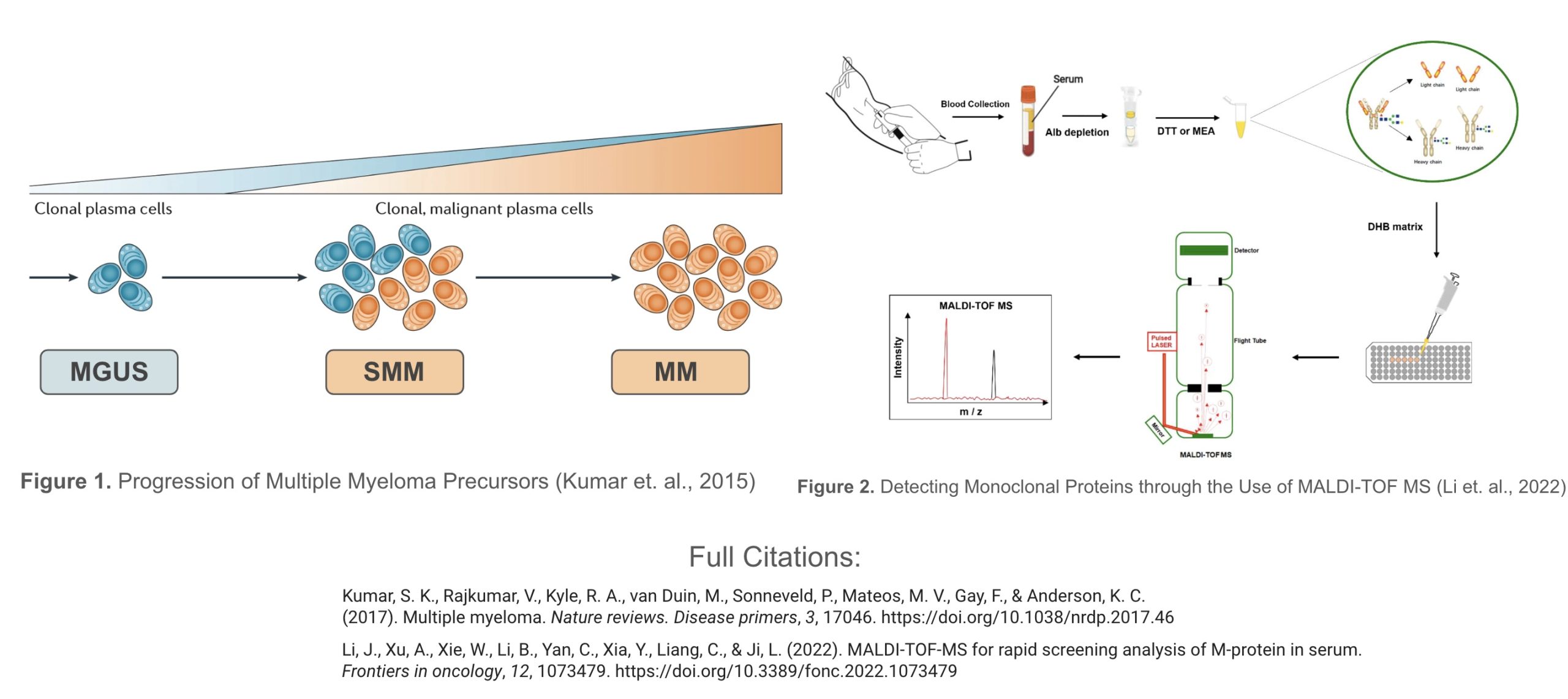Multiple myeloma (MM) is an incurable form of blood cancer that occurs because of the proliferation of atypical plasma cells, forming an excessive amount of monoclonal immunoglobulin, also known as the “M-protein” or the “M-spike.” The diagnosis is made when the following characteristics of end-organ damage are shown: hypercalcemia, renal insufficiency, anemia, and bone lesions. The progression of MM is often implied through asymptomatic hematological precursor stages, starting from monoclonal gammopathy of undetermined significance (MGUS) that can transition to smoldering multiple myeloma (SMM) before reaching MM. However, the research on precursor conditions’ prevalence and changes centered less on high-risk populations, whose risk factors can expedite the progression rate. In this case, a high-risk population is a population with one or more risk components of entering the multiple myeloma stage, such as race (African Americans or those with African heritage), sex (male), age, and family history (first-degree family members with MM or other B-cell disorders). Therefore, the PROMISE study aims to recruit those at a larger risk of potentially forming MM. Currently, serum protein electrophoresis (SPEP) and immunofixation electrophoresis (IFE) are used to determine the presence of MGUS, SMM, and MM, but they are prone to subjectivity and lower sensitivity. Instead, I will use mass spectrometry (MALDI-TOF) and a protein analyzer for immunoglobulins (Optilite) to analyze serum samples of individuals with a larger potentiality of acquiring MM. The higher sensitivity of those novel techniques will allow me to detect the type/amount of monoclonal protein(s) in high-risk populations (if present) and analyze their hematological state (negative, MGUS, SMM, or MM) even if a minimal concentration is present. Ultimately, this screening approach will determine the commonness of hematological precursor diseases in high-risk populations, indicate the potential impact of early screening among them, and allow individuals to take preventative actions before their condition reaches MM.




